HS Codes: What Are They and Why Do I Need Them?
The Harmonized System stands is a standard international code system developed by World Customs Organization (WCO) for classifying goods moving across the international border. More than 200 countries have adopted Harmonised System (HS) codes and over 98% of international trade merchandise has been classified under the HS to help determine their Custom Tariffs. Another benefit of an HS code is that it helps the government with analyzing import export data volume.
A typical HS code comprises six numbers split into three pairs, representing a chapter, heading, and subheading in this particular order. There are 5,000+ commodity groups in a logical and legal structure to make the process easy and avoid legal complexities around custom regulations. This article provides a detailed look into HS codes and their significance in international trade and commerce.
An Overview of HS codes
The Harmonised System nomenclature is split into sections, each containing a variety of chapters, headings, and subheadings. Section numbers are not part of an individual HS code and are only used to organize the nomenclature. There are:
- 21 sections
- 96 chapters
- 1,244 headings
- 5,224 subheadings
Here’s an example of a basic six-digit HS code. Say we’re looking to ship apples abroad:
- First, we’ll go to Section 2, ‘Vegetable Products’.
- Then Chapter 08: ‘Edible fruit and nuts; peel of citrus fruit or melons’.
- The chapter has 14 headings, but we’re looking for Heading 08: ‘Apples, pears and quinces, fresh’.
- Finally, we’ll go to Subheading 10, helpfully titled ‘Apples’.
So the HS code we want is 0808.10. Therefore, understanding the characteristics of the product is crucial for getting the correct code.
The Benefits of Applying Correct HS Codes
Understanding how HS codes work can help your business become customs compliant. By applying the correct codes, you can:
- Reduce the Risk of delays: Customs authorities use HS codes to identify shipments. Incorrect codes could delay your items in customs while authorities determine what kind of goods you’re shipping. Using the correct codes helps lower the chances of such delays.
- Pay Correct Customs Duties: Without the correct HS codes, customs authorities won’t know what duties to apply to your shipment. You could be charged a higher level of customs duty. Applying the correct codes means you pay the correct amount.
- Please Your Customers: Using the correct HS codes helps your goods cross borders without unforeseen delays. This means timely deliveries that can improve customer satisfaction and increase the chances of repeat business and positive reviews.
Country-Specific Commodity Codes
While HS codes are intended to be universal, some countries have their own set of commodity codes with additional digits. Examples are:
The U.S.
The U.S. International Trade Commission uses HTS codes that are 10 digits long. The first 2 of the 4 additional digits specify the duty rate, and the second 2 are used for trade data. The final 2 don’t actually classify the product and aren’t always necessary — but instead of being removed entirely, they’ll be listed as ‘00’.
Let’s take apples as an example again: the HTS nomenclature further divides apples into three more categories:
- 30: Valued not over 22¢ per kg
- 45: Valued over 22¢ per kg/Certified organic
- 65: Valued over 22¢ per kg/Other
If our apples are expensive, high-grade organic apples, they’d be 0808.10.45.00. In the nomenclature (Section 2, Chapter 8), this code means no customs duty is due on these items.
An additional layer of complexity comes from U.S. businesses having to use an entirely different set of commodity codes for exporting, called Schedule B numbers. If you trade with the U.S., remember that HTS codes are only for imports into the country.
The EU
The EU has two coding systems for importing: Combined Nomenclature and EU TARIC.
Combined Nomenclature (or CN) works like the Harmonised System: it helps customs authorities identify goods and apply the correct customs duty rates. It’s also used for collecting international trade data.
The CN divides the code ‘0808.10’ into two sections: 10 (for cider apples) and 80 (for everything else). Our high-grade organic apples would use the CN code ‘80’. If you have the weight and price of a shipment, the Combined Nomenclature also has codes for calculating customs rates.
EU TARIC codes refer to the trade rules affecting the import of goods. If you’re transporting potentially hazardous chemicals or pharmaceuticals, there will likely be trade legislation concerning their sale. However, with our apple example, there’s no related legislation. As such, the TARIC code is ‘00’.
Using both systems, the code for shipping our apples into a European Union member country would be 0808.10.80.00.
China
Chinese customs codes are longer than the previous two country-specific codes we’ve listed. A standard Chinese code contains a basic six-digit HS code as well as:
- 2 additional digits to identify the product.
- 2 digits for a Customs Supervision number.
- 3 digits for an Inspection and Quarantine number.
China uses customs codes for more than just importing goods. If you set up a business entity in China, you must detail your ‘business scope’, which requires the customs codes for the goods you plan on importing, exporting, and trading domestically.
Stay Up to Date: ICS2 and HS Updates
It is quite important to stay as up-to-date as possible with any changes to the customs compliance landscape as rules and legislation can change, and failing to adapt could mean business disruption and penalties for non-compliance. Prior to 2002, the World Customs Organisation made small, frequent adjustments to the Harmonised System whenever necessary. It now undergoes a comprehensive review every five years with the most recent update in 2022.
It’s also vital to keep an eye on region- and country-specific customs updates as individual countries are likely to change their regulations more often. One example is ICS2, the new EU Import Control System. ICS2 is intended to increase the effectiveness of EU customs authorities through automation, particularly in areas like national security. Getting goods through ICS2 will require a much higher level of compliance than its previous iteration.
Conclusion
Premium sourcing companies like Inductus Global can save you time and reduce the risk of human error when applying HS codes. We have powerful classification tools that can instantly identify your products and add any country-specific codes, making it much easier to become customs compliant when shipping overseas. It also automatically accounts for updates to national customs nomenclatures and the Harmonised System, and is easily integrated into your existing software.









